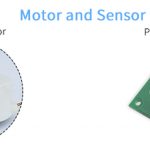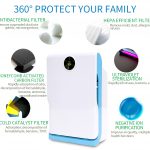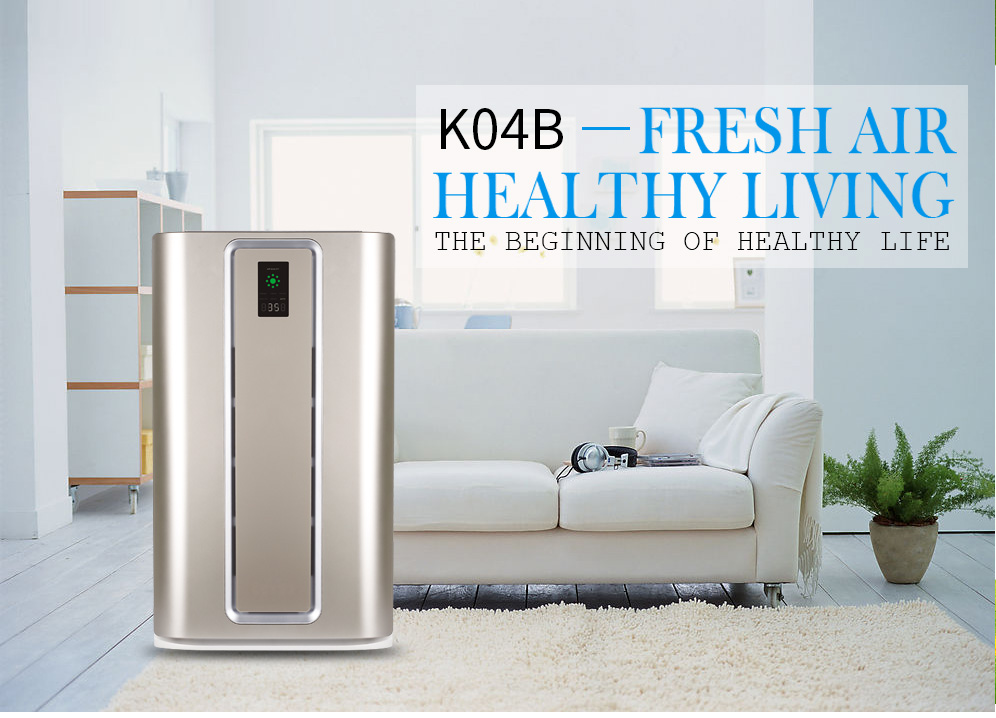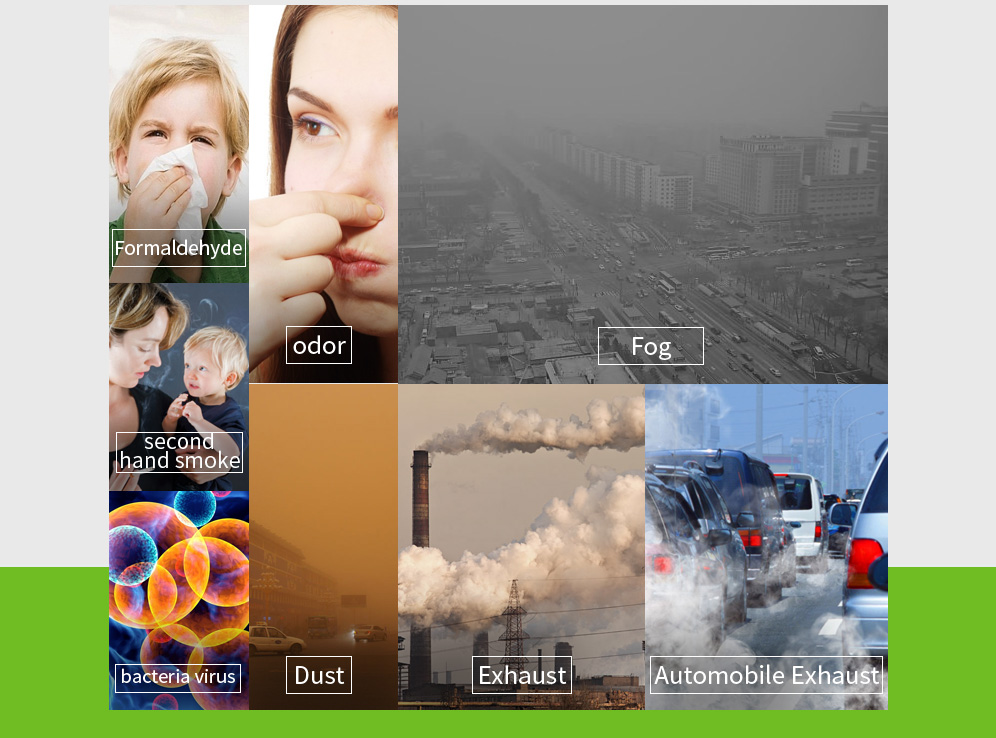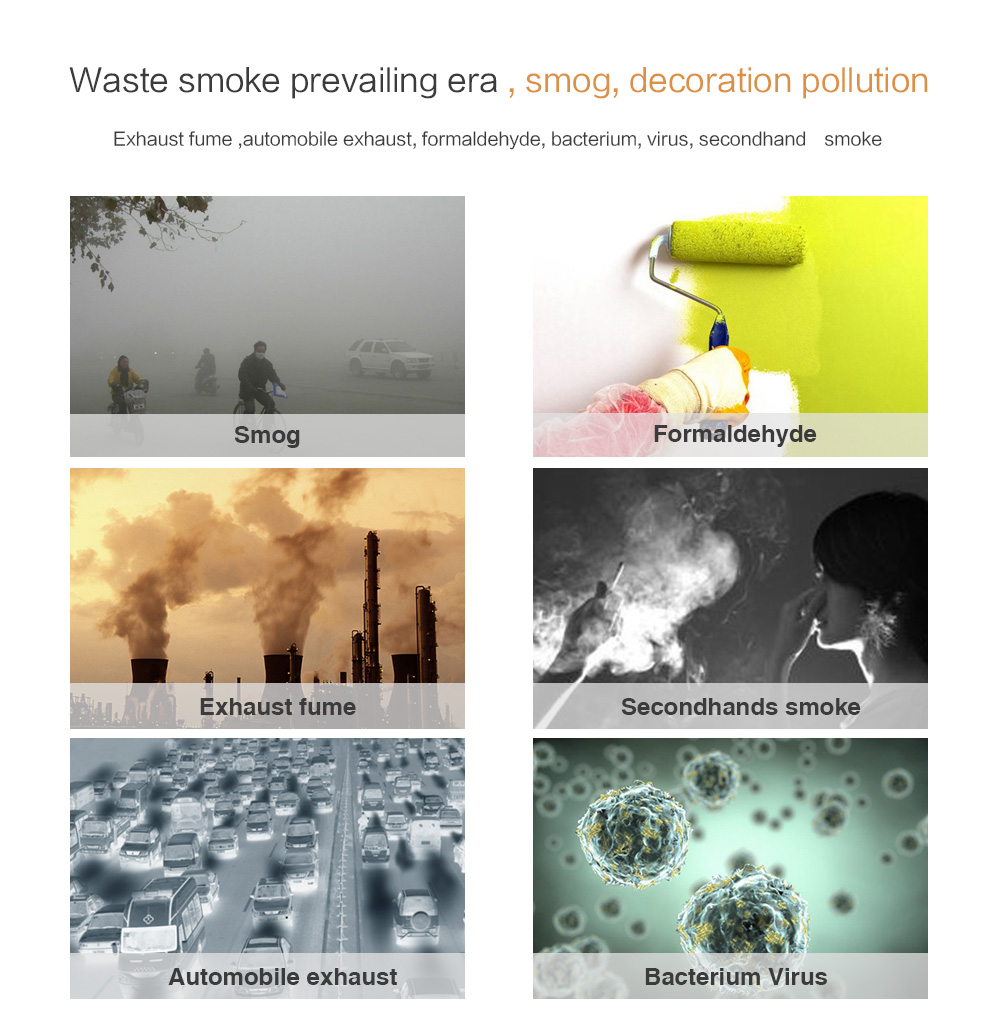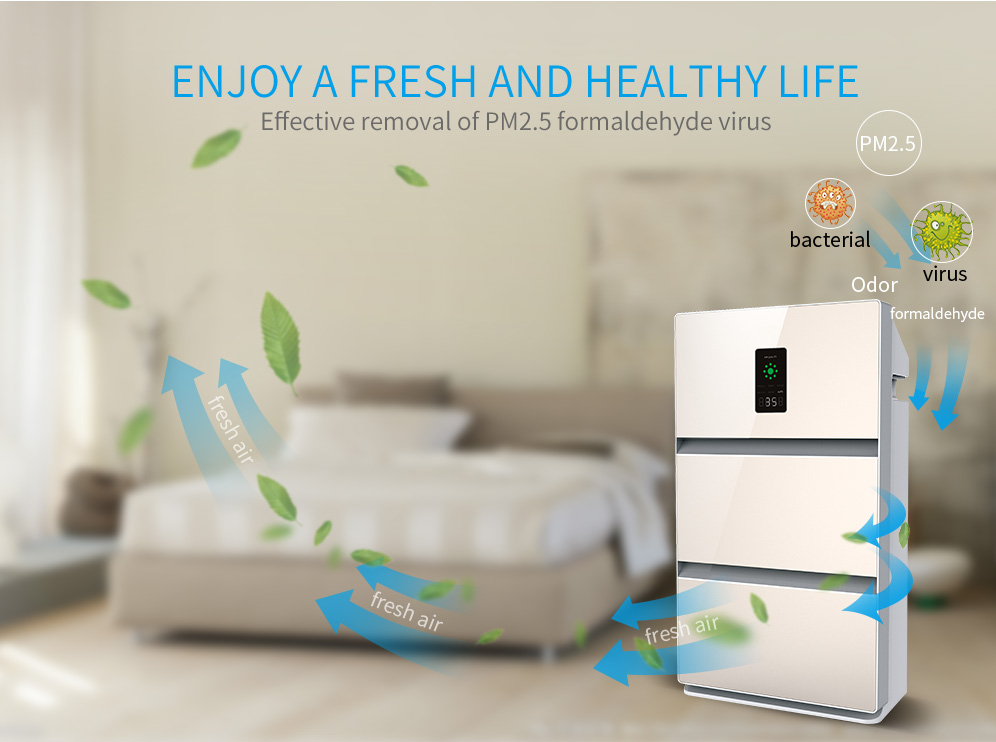In the smog, don’t think that the indoor air is cleaner than the outside

Now that it has entered a period of high incidence of smog, people began to experience the pain of breathing. Many people think that the indoor air in the haze is much better than the outdoor. As long as the doors and windows are closed and the house is at home, it can prevent smog. Is that really the case?
1.Is the indoor air better than the outdoor in the fog?
Engineers from the China Academy of Building Research have found through many field measurements that the concentration of PM2.5 in the room is not necessarily lower than that of the outside, due to factors such as smoking and cooking. The measurement found that in the case of no window opening, no smoking or cooking, the concentration of indoor PM2.5 is generally about 30% to 40% lower than the outdoor concentration. For example, if the outdoor is about 500, the indoor temperature is usually about 300-350. Another set of test data shows that some household indoor PM2.5 concentration values are higher than outdoor. One of the households found that the outdoor PM2.5 concentration was 230 μg/m3 and the indoors reached 474 μg/m3 when the door was closed for several days. Therefore, it cannot be said simply that the indoor air in the haze is necessarily better than the outdoor.
2.The source of indoor air pollution
Indoor PM2.5 is affected by many factors. Previously, they also monitored some public places, and the PM2.5 concentration inside was even higher than that of the outdoor. This was caused by many factors. Hou Li’an, an academician of the Chinese Academy of Engineering, said that the source of indoor PM2.5 is mainly from outdoor pollution sources and indoor pollution sources.
Source 1: Outdoor
When the fog is severe, the window opening is not properly ventilated, and the indoor PM2.5 concentration will rise rapidly. At the same time, in the case of closing the doors and windows, it does not mean that the air flow is isolated. The tiny PM2.5 particles can still run into the house. At the same time, people will carry a variety of fine particles and microorganisms when they go out to their homes.
Source 2: Indoor
In fact, daily activities such as gas burning, kitchen fume, indoor smoking, air conditioning heating, furniture decoration, etc. will bring PM2.5 to the interior. Because the indoor space is small, the probability of producing PM2.5 in a closed room is more obvious than that in the outdoor, so the home is not necessarily absolutely safe at home.
3.How to purify indoor air
In the face of the ‘ten crouching’ environment, how should we properly clean indoor air, effectively suppress indoor PM2.5 pollution, and create a healthy and healthy indoor environment.
1)Properly open the window ventilation
If the fog does not open the window, it can reduce the intrusion of PM2.5. However, long-term indoor ventilation will cause the concentration of carbon dioxide and other exhaust gases to slowly exceed the standard, and the content of microorganisms and bacteria will increase, even more than outdoor air. Not enough, people will feel poor breathing. Therefore, smog days also need to open windows for a short time. The staff of the provincial environmental monitoring station suggested that when the outdoor air pollution is not very serious, avoid the traffic peaks and winds caused by morning and evening. When dust is raised, under the static wind conditions, you can open the window twice a day for 20-40 minutes. If you encounter continuous pollution, you can hang a wet towel near the screen window when ventilation, which can filter and absorb. effect.
2) Raising green plants
Some experts suggest that when outdoor air pollution is serious, you can plant more green plants with relatively strong adsorption capacity on balconies, terraces, indoors, and try to select large leaf plants. Because of the large leaf area and many pores, it can not only adsorb PM2. 5, can also increase the oxygen content of the air. Such as green radish, evergreen, tiger skin, ivy and so on. Since the surface of the plant contains a layer of adsorptive mucus, this mucus has a strong adsorption function for tiny particles. At the same time, plants can also adsorb a small amount of PM2.5 during photosynthesis. Therefore, using natural means such as green plants to help slow indoor PM2.5 pollution is both effective and trouble-free, and can add a green color to the home.
3)Less smoking
Cigarettes, cigars and pipes produce a lot of fine particles in the PM2.5 category when incompletely burned. Tobacco smoke contains more than 7,000 compounds, including 69 carcinogens and 172 harmful substances, which can seriously harm the smoker itself. And the physical health of the inhaled ‘secondhand smoke’ audience is even worse in the ashes. Therefore, smokers should smoke as little as possible, whether they are going out or staying indoors.
4)Choose the air purifier
A good air purifier has a good adsorption effect on PM2.5 and can play a certain purification role. The core of the air purifier is the filter. If you want to filter PM2.5 particles, the best internationally recognized HEPA high-efficiency filtration technology can effectively suppress allergens in the air, such as dust, pollen, germs, second-hand smoke, dust. Such as small particles, the purification rate for particles of 0.3 microns is 99.97%. If it is used to filter cigarettes, the effect of filtration can be almost 100%, because the size of the particles in the cigarette is between 0.5 and 2 microns, and the membrane cannot pass through the HEPA filter. For the purchase of air purifiers, please click here to view the product content of our station.
5)Light diet, soot filtration and discharge
Cooking fumes also have a small contribution to PM2.5. Cooking, frying, frying, roasting, etc. will cause indoor PM2.5 to soar, so when cooking, replace with cold, steamed, boiled, marinated, etc. It is possible to control the oil temperature not to exceed 200 °C.
When selecting a range hood, the inner row hood should be considered more, because the hood type hood only discharges the exhaust gas directly to the outside after a simple soot separation, which is very harmful to the collective environment. The inner-row hood also uses a filter to absorb harmful gases after the soot is separated, and then discharges the purified gas. At the same time, the range hood should be opened early and closed, and the kitchen window should be ventilated.
6)Do indoor cleaning and personal hygiene
Wipe the tables and chairs with water in the house and mop the floor, because the humid air helps to reduce dust and fine particles floating in the air. In addition, the use of a humidifier, the placement of towels on the heater, the cleaning of sheets, pillows, etc. with a wet towel are all desirable methods of absorbing fine dust. In addition, use air fresheners or cleaning products as little as possible, including aldehydes, benzenes and other pollutants.
After going out to the room, you should wash your face, rinse your mouth, clean your nose, and remove the contaminated residue attached to your body. This will minimize the adverse effects of smog on health. It is best to use warm water when washing your face, which is good for washing off the particles on your face. When cleaning the nasal cavity, you can use a clean cotton swab to wash the water repeatedly, or repeatedly use the nose to gently absorb water and quickly rub your nose, while avoiding coughing. In addition to facial cleansing, the exposed parts of the body are also cleaned.
7)Replace the closed door and window
Under the influence of outdoor bad weather, tiny particles will enter the room through poorly sealed doors and windows, which is an important way to generate indoor PM2.5. The use of more airtight doors and windows is conducive to the reduction of indoor pollution values. Therefore, when replacing the doors and windows, it is necessary to choose a good airtightness, and the sound insulation and dust can be obtained in one fell swoop. The sliding window is more airtight than the casement window. When replacing, try to choose the casement window.
Olansi Healthcare Industry portable air purifier is willing to work with more families to further study and manage family indoor issues and contribute to more family health.
If you are interested in this, please contact us for more products and preferential prices
Helen:
+86 13922346046
info@olansiglobal.com
https://www.olansiglobal.com
